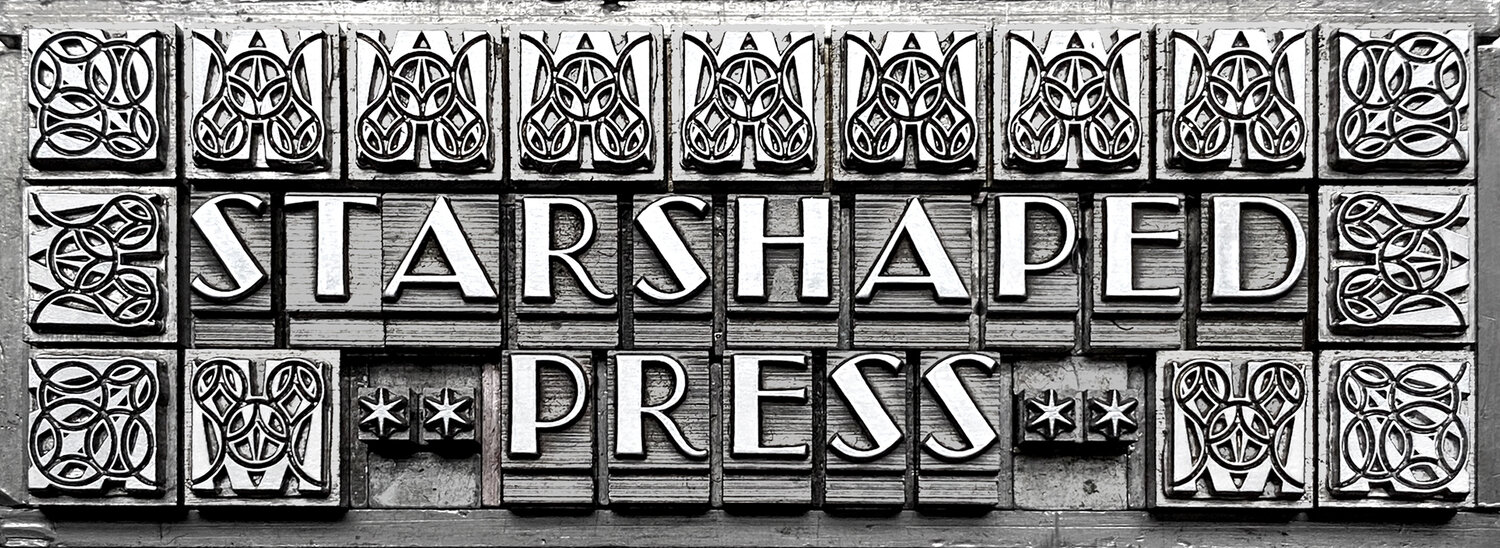Chances are, if you're reading this you already love books. And type specimens are the finest; even the simplest ones offer so much typographic goodness that it's hard not to love them.
Sure, some specimen books are rare and quite expensive. But you don't need to have the originals! I have a number of Dave Peat's facsimiles that are just as helpful.
Beauties! Take note of the bottom rectangle above that shows the various sorts that are used to create the border on display. This is exactly what I go for when looking at ornamental specimens. Many 19th century borders and ornaments are so complex and intricate it can be difficult to fully grasp what the designer had in mind in terms of how they fit together. When I acquire sets or even single sorts I attempt to discover first who the foundry was (this is often on the pinmark) and secondly how many pieces make up a set.
Here I've tracked down some of my collection in the MacKellar Smiths & Jordan specimen. There's no doubt they produced some of the finest examples of detailed 19th century ornament and borders and I recommend bugging Pinwheel Press for more details (Laura is the champ on this front!)
One of the first things I do when acquiring new ornaments is to proof them in black on white stock. Then I have a record and can easily cross reference them with books.
Not only does it make it easier to see the detail but it helps me organize my storage, find them in books and scan them to do basic layouts on a computer. I can also keep track of how many of each sort I have.
I don't always have the books I need so I spend time where they do exist. I've got photocopies of pages from books at The Platen Press Museum, where I've been known to sit on the floor for hours digging for ornaments I have and those I wish I had.
More contemporary books are great as well and have helped me understand how disparate ornaments come together to create borders. When I first found this, I didn't know they were billed together by ATF:
The beauty of this is that I now know what ornaments I might like to track down or will purchase if I ever see them in the wild. Then I can complete a set, or at least look for something similar to achieve the same effect. It also makes me wonder about the thought process of printers of yesterday... how did they decide which size to buy? The solid or outline? A whole combination or just one element? When I consider my own desires for type, it makes me feel connected to the past.
I spend a lot of time at the Newberry Library as they offer a large selection of specimen books and single specimen sheets. I find it difficult to know how some pieces work together, these word ornaments in particular. After studying samples in the Marder & Luse specimen books, I started playing with my own to see how to build with them.
Word ornaments are very Tetris-like but not in the easy way that more modular, mid-century sorts are. And look at some of those tiny little squiggles! If you didn't know they were part of a larger group you might think they are just... squiggles. These specimens help me determine where all those tiny, frustrating pieces go.
I can't recommend specimen books, facsimiles or reprints enough. Also, if you find cheap ephemera (postcards, needle packets, etc.) from the late 19th century, check the typography on the 'boring' side of the piece to see how printers worked in ornamentation. Chances are they bought it new and used it exactly as it was shown in the original books. And seek out your closest source (library, museum, university) for their collection of specimen books (share your favorites in the comments!) Word up, yo.









